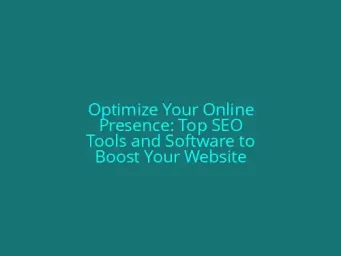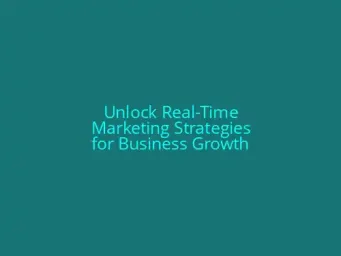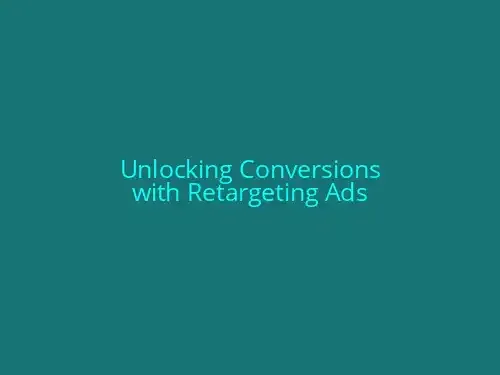
Unlocking Conversions with Retargeting Ads
### 1. Introduction to Retargeting Ads\n#### What are Retargeting Ads?\nRetargeting ads are a powerful marketing strategy designed to re-engage users who have shown interest in your products or services but havent completed the desired action. These ads provide a second chance to convert visitors who left your website without taking the desired action. By using retargeting ads, you can significantly enhance your marketing strategy and drive conversions.\n#### Benefits of Retargeting Ads\nRetargeting ads offer numerous benefits, including increased conversions, improved brand awareness, and enhanced user engagement. Retargeting helps you stay top-of-mind with potential customers, increasing the chances of conversion. Additionally, it supports upper-funnel awareness and lead nurturing campaigns by providing a clear path to conversion.\nRetargeting ads are highly effective in delivering a high return-on-investment (ROI). They help businesses maximize their investments by targeting users who have already shown interest in their products or services. This targeted approach ensures that your marketing efforts are focused on users who are more likely to convert.\n#### How Retargeting Ads Work\nRetargeting ads work by leveraging cookies or pixels embedded in visitors browsers. These cookies or pixels track website activity and identify users who have visited your site but left without completing the desired action. The retargeting platform then serves personalized ads to these users, encouraging them to return to your site and complete the conversion process.\nFor instance, if a user browses your e-commerce site but doesnt make a purchase, you can serve them retargeting ads with discounts or promotions to encourage them to complete the purchase. Similarly, if a user fills out a form but doesnt submit it, you can retarget them with a follow-up ad to nudge them towards completion.\n#### Gathering Data for Retargeting Ads\nGathering data is crucial for retargeting ads. You can use pixel-based retargeting, which embeds a small JavaScript or pixel in visitors browsers. This pixel tracks their website activity and allows you to serve targeted ads. Alternatively, you can use list-based retargeting, where you create a list of contacts using your existing database or email marketing campaigns.\nIn conclusion, retargeting ads are a valuable tool in any marketing strategy. By understanding how they work and implementing best practices, you can maximize the effectiveness of these ads and drive conversions.### 2. Benefits of Retargeting Ads\n#### Header: Why Retargeting Ads Matter\nRetargeting ads play a crucial role in enhancing a marketing strategy and driving conversions. These ads target users who have previously interacted with a brand, increasing the chances of conversion. Here are the key benefits of using retargeting ads:\n- **Increased Conversions**: Retargeting ads help re-engage users who have already shown interest in a brand, leading to higher conversion rates compared to traditional marketing methods.\n- **Improved Brand Awareness**: Retargeting ads keep the brand top-of-mind, maintaining a strong presence even after users leave the website.\n- **Enhanced User Engagement**: By tailoring ads to specific user behavior, retargeting ads create a more personalized experience, leading to higher engagement rates.\n- **Cost-Effective**: Retargeting ads are more cost-effective than traditional advertising methods, as they target users who have already shown interest, reducing the need for broad targeting.\n- **Targeted Advertising**: Retargeting ads allow for highly targeted advertising, focusing on specific user segments based on their actions or interests.\n- **Increased ROI**: By targeting users who have already shown interest, retargeting ads can lead to higher returns on investment compared to broader targeting methods.\nBy incorporating retargeting ads into a marketing strategy, businesses can see significant improvements in conversion rates, brand awareness, and user engagement, ultimately leading to increased revenue and cost savings.### Boosting Conversions with Retargeting Ads\n**Header:** Best Practices for Optimizing Retargeting Ads\n**Content:**\n1. **Segment Your Audience:**\n Retargeting ads work best when you segment your audience based on their interests and behaviors. This way, you can create tailored ads that resonate with each group. For example, if someone browsed your clothing section but didnt buy anything, you can serve them ads for similar products or related accessories..\n2. **Use Dynamic Ads:**\n Dynamic ads are personalized and show the exact products or services the user was interested in. This makes the ad more relevant and increases the likelihood of conversion. For instance, if a user added a product to their cart but left without checking out, you can retarget them with that exact product and offer a discount or promotion to encourage completion of the purchase.\n3. **Create Compelling Ad Content:**\n Retargeting ads should be visually appealing and concise. Avoid using too much text and focus on highlighting the benefits of your product or service. Use action-oriented language and include clear calls-to-action (CTAs) like Shop Now or Learn More. This will encourage users to click on your ad and visit your website again.\n4. **Dont Overdo It:**\n Its essential to balance the frequency of your retargeting ads. Showing the same ad repeatedly can lead to ad fatigue, causing users to ignore or even block your ads. Limit the number of ads per day or week to maintain a positive brand image and avoid overwhelming your audience.\n5. **Track Ad Performance:**\n Monitor the performance of your retargeting ads closely. Track metrics like clicks, reach, and conversion rates to understand whats working and what needs improvement. Adjust your ad targeting, creative, and budget accordingly to optimize your campaigns effectiveness.\nBy following these best practices, you can significantly boost conversions with retargeting ads and enhance your marketing strategy.### 4. Implementing Retargeting Ads for Conversion\nTo set up a retargeting ad campaign that drives conversions, follow these steps:\n- **Identify Your Target Audience**: Analyze data from your websites tracking pixel or code snippet to understand user behavior and segment your audience effectively. This will ensure that your ads are targeted at the right people and increase the likelihood of conversions.\n- **Select Advertising Platforms**: Determine which platforms youll use for your retargeting ads. Common options include Google Ads, Facebook Ads, and other social media platforms. Ensure that your ads are optimized for both desktop and mobile devices.\n- **Collect and Use Data**: Use retargeting tools to collect user data and track user behavior. This data will help you create targeted ads that resonate with your audience, boosting conversions and engagement.\nBy focusing on these key steps, youll be able to implement a retargeting ad campaign that effectively captures your target audience and drives conversions.
read more →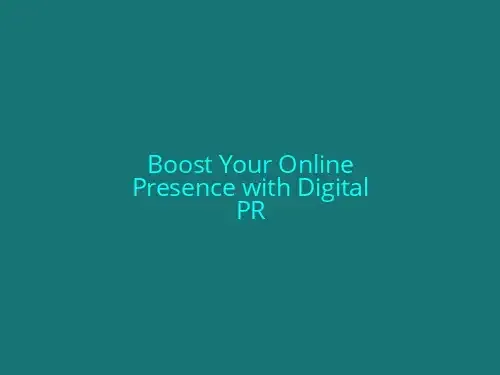
Boost Your Online Presence with Digital PR
**Section 1: Introduction to Online Public Relations**\n**1. Introduction to Online Public Relations**\n- **Definition**: Online public relations (PR) refers to the strategic activities and tactics used to manage an organizations reputation and maintain a positive image in the digital space. This includes managing the brands online presence, responding to online feedback, and creating engaging content to connect with target audiences.\n- **Importance in the Digital Age**: In todays digital landscape, online PR is crucial for businesses to maintain a strong brand reputation, build trust with customers, and stay competitive. The rise of social media and online platforms has made it easier for customers to share their experiences and opinions about a brand. Effective online PR helps mitigate negative feedback and amplifies positive messages, ultimately enhancing brand visibility and credibility.\n---\nThis section sets the stage for the importance of online public relations and how it differs from traditional PR practices. It highlights the need for businesses to adapt to the digital age and leverage online channels to manage their brand reputation and connect with audiences effectively.### 2. Combining SEO and Online Public Relations\nCombining SEO and online public relations is a powerful strategy for achieving better results in digital marketing. Here are some key points to consider:\n#### 1. The Power of Combining SEO and PR\nCombining SEO and online public relations can increase your online visibility by leveraging both strategies together. This helps in driving traffic to your website while also improving your brands reputation and credibility.\n#### 2. Link Building and Content Amplification\nLink building and content amplification are essential components of both SEO and online public relations. By building high-quality backlinks and amplifying your content, you can enhance your online visibility and credibility.\n#### 3. Benefits of Combining SEO and PR\nCombining SEO and online public relations offers several benefits, including:\n- **Improved Search Engine Rankings:** By optimizing your content for search engines and leveraging online public relations, you can improve your search engine rankings and increase your online visibility.\n- **Enhanced Brand Visibility:** Combining SEO and online public relations helps in enhancing your brand visibility by increasing the chances of your content being shared and linked to.\n- **Increased Credibility:** When you combine SEO and online public relations, you can increase your credibility by showcasing your expertise and thought leadership in your industry.\n#### 4. Challenges of Combining SEO and PR\nCombining SEO and online public relations also presents some challenges, such as:\n- **Competing Priorities:** Both SEO and online public relations require significant resources and attention. Managing these competing priorities can be challenging.\n- **Quality vs. Quantity:** In SEO, quality and relevance are crucial. In online public relations, the focus is more on quantity and reach. Balancing these different priorities can be difficult.\n#### 5. Best Practices for Combining SEO and PR\nTo combine SEO and online public relations effectively, follow these best practices:\n- **Focus on Quality Content:** Always prioritize quality and relevance in your content to ensure it resonates with your target audience.\n- **Use Keywords Strategically:** Use keywords strategically in your content to improve its search engine rankings and relevance.\n- **Amplify Your Content:** Amplify your content by sharing it on social media and other platforms to increase its reach.\n- **Monitor and Analyze:** Monitor and analyze your performance regularly to adjust your strategies and optimize your efforts.\nBy combining SEO and online public relations, you can create a powerful digital marketing strategy that drives traffic, enhances your brand visibility, and increases your credibility.**Section 3: Effective Strategies for Online Public Relations**\n### Effective Strategies for Online Public Relations\n#### Improving Influencer Outreach for Brand Awareness\n- **Identify the right influencers**: Look for influencers in your niche who align with your brand values and have a dedicated audience.\n- **Engage with influencers**: Build meaningful relationships by commenting, liking, and sharing their content.\n- **Collaborate on content**: Partner with influencers to create high-quality, engaging content that resonates with your target audience.\n- **Monitor and measure performance**: Track the success of influencer collaborations through metrics such as increased followers, engagement, and website traffic.\n#### Aligning Brand Messaging for Consistency and Recognition\n- **Develop a clear brand voice**: Establish a distinct tone, language, and style across all online platforms.\n- **Consistency in branding**: Ensure all brand materials, including logos, colors, and typography, are consistent across all channels.\n- **Storytelling and emotional connections**: Use compelling narratives and emotional appeals to create connections with your audience.\n- **Analyzing and adjusting brand messaging**: Monitor the effectiveness of brand messaging and adapt strategies to optimize results.\n#### Analyzing and Adjusting Online PR Efforts\n- **Track key metrics**: Monitor metrics such as engagement, website traffic, and social media growth to gauge the effectiveness of your online PR strategies.\n- **Adjust strategies based on data**: Use insights from analytics to refine and improve your online PR strategies.\n- **Stay up-to-date with industry trends**: Continuously educate yourself on the latest best practices and trends in digital PR and SEO.\n- **Maximize ROI on PR efforts**: Ensure that your online PR strategies are generating tangible results and ROI for your brand.\nBy combining these effective strategies, you can elevate your online presence, enhance your brands visibility and reputation, and maximize your online PR efforts return on investment.### Section 4: SEO Best Practices for Online Public Relations\nThis section delves into the specific techniques and strategies for optimizing your online public relations efforts to boost your search engine rankings and visibility.\n#### 4.1 Creating a Keyword List for Targeted Online Public Relations\n* Identify relevant and high-traffic keywords related to your brand and industry\n* Use tools like Lowfruits and Semrush to find and analyze keywords\n* Include long-tail keywords to target specific search queries and niches\n* Ensure keywords are naturally integrated into content and meta tags, avoiding keyword stuffing\n#### 4.2 Optimizing Content for Search Engines\n* Use H2, H2, and H3 headings to structure content and highlight key points\n* Include meta descriptions that accurately summarize the content and include target keywords\n* Use internal and external linking to enhance user experience and search engine crawling\n* Ensure content is concise, well-researched, and engaging to improve readability scores\n#### 4.3 The Role of Page Loading Speed and Content Creation in SEO\n* Use tools like PageSpeed Insights to analyze and optimize page load times\n* Ensure images and multimedia are optimized and compresses for faster loading\n* Create high-quality, unique, and regularly updated content to attract and engage users\n* Use analytics tools to track and adjust content performance and user engagement\n### Example of how to structure the content:\n```markdown\n### 4. SEO Best Practices for Online Public Relations\n#### 4.1 Creating a Keyword List for Targeted Online Public Relations\n* **Identify relevant keywords**: Use tools like Lowfruits and Semrush to find and analyze high-traffic keywords.\n* **Include long-tail keywords**: Target specific search queries and niches by incorporating long-tail keywords naturally into content and meta tags.\n* **Avoid keyword stuffing**: Ensure keywords are naturally integrated, not overused or manipulated.\n#### 4.2 Optimizing Content for Search Engines\n* **Use structured headings**: H2, H2, and H3 headings help structure content and highlight key points.\n* **Craft meta descriptions**: Include meta descriptions that accurately summarize the content and include target keywords.\n* **Optimize internal and external linking**: Enhance user experience and search engine crawling with relevant and well-placed links.\n* **Ensure high-quality content**: Create concise, well-researched, and engaging content to improve readability scores.\n#### 4.3 The Role of Page Loading Speed and Content Creation in SEO\n* **Optimize page loading speed**: Use tools like PageSpeed Insights to analyze and optimize page load times.\n* **Compress images and multimedia**: Ensure images and multimedia are optimized and compressed for faster loading.\n* **Create high-quality and unique content**: Attract and engage users by creating high-quality, unique, and regularly updated content.\n* **Track and adjust content performance**: Use analytics tools to track and adjust content performance and user engagement.\n```\n### Conclusion\nEffective online public relations and SEO are crucial components of modern marketing strategies. By combining these two disciplines, you can enhance your brands visibility and reputation. Implementing the best practices outlined in this section will help you create a robust online presence and stay ahead in the competitive digital landscape.
read more →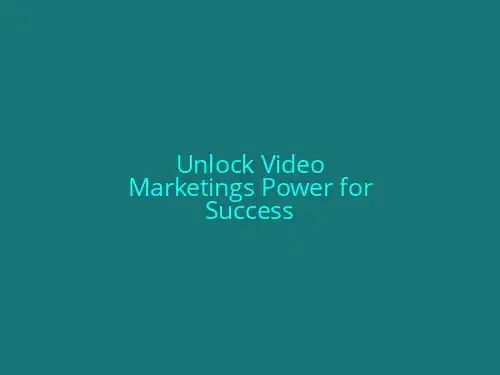
Unlock Video Marketings Power for Success
**Unlock the Power of Video Marketing: Strategies for Success**\n**Section 1: Introduction**\n### Why Video Marketing Matters\n**Definition of Video Marketing**\nVideo marketing is the process of using video content to promote and market products, services, or a brand. It encompasses various forms of video content, including product demos, customer testimonials, behind-the-scenes footage, and educational content.\n**Importance in Todays Digital Landscape**\nVideo marketing has become crucial in todays digital age, where online users increasingly prefer video content. According to a recent Forbes report, video content reaches 92% of internet users worldwide, making it an indispensable tool for businesses to reach and engage their target audience.\n**Stats on the Growth of Video Marketing**\nThe demand for video content is rising rapidly. A 2023 Insivia report reveals that video messages retain 95% more attention compared to text-based messages, while a 2024 Campaign Monitor study shows that videos can improve open rates by 6% and click-through rates by 65%.\n### Key Takeaways\n- Video marketing is a vital component of modern marketing strategies, enhancing engagement, brand awareness, and conversion rates.\n- It allows businesses to connect with customers on a deeper emotional level, fostering loyalty and trust.\n- Video content is more likely to be shared, boosting visibility and exposure online.\n**Unlock the power of video marketing by embracing its potential to captivate audiences, drive conversions, and elevate brand recognition.****How Video Marketing Boosts Engagement**\nVideo marketing is a powerful tool for boosting engagement with your brand, products, and services. Here are some key benefits:\n### Increased Brand Awareness\nVideos are more engaging and memorable than text-based content, making them a great way to increase brand awareness. According to a report by Statista, the average internet user consumes 17 hours of online video content per week. This means that video content can reach a wide audience and help your brand stand out.\n### Higher Conversion Rates\nVideos can significantly increase conversion rates by providing viewers with a clearer understanding of your products and services. For example, explainer videos help customers understand complex concepts and product features, leading to higher sales and conversions. Additionally, videos can be used to showcase customer testimonials, building trust and credibility with potential customers.\n### Enhanced Customer Connection\nVideos evoke emotions and can create an emotional connection with viewers. This is especially important for customer retention, as loyal customers are more likely to return and recommend your brand to others. By crafting engaging and emotive videos, you can foster deeper connections with your audience and increase customer loyalty.\nBy incorporating video marketing into your overall strategy, you can see significant improvements in engagement, conversion rates, and customer satisfaction.**Section 3: Types of Video Marketing**\n### 4. **Product Videos/Demos**\nProduct videos and demos are essential in showcasing the features and benefits of your product. These videos can help customers understand how your product works and solve their problems. By explaining product features through engaging visuals and narration, you can increase sales and conversion rates.\n#### Example: Explainer Video\nFor instance, an explainer video can introduce your product by highlighting a specific problem and presenting your product as the solution. This format is effective in conveying complex information in a concise and easy-to-understand manner. The video can include animations, live-action footage, or whiteboard illustrations to make the product explanation more engaging and memorable.\n### 5. **Explainers and Educational Content**\nExplainer videos and educational content are crucial for building trust and authority with your audience. These videos can clarify services and products by providing detailed explanations and demonstrations. By offering valuable information and insights, you can establish your brand as an expert in your field and increase customer engagement.\n#### Example: Educational Series\nAn educational series can include a series of short videos that teach viewers about your product or service. Each video can focus on a specific aspect of the product, such as its features, benefits, or applications. This type of content not only educates but also engages and entertains the audience, making them more likely to become customers.\n### 6. **Promotional Videos and Advertising**\nPromotional videos and advertising are designed to drive sales and increase brand awareness. These videos can be used across various channels, including social media, email marketing, and paid advertising. By highlighting the unique selling points of your product and creating an emotional connection with the audience, you can increase brand loyalty and conversions.\n#### Example: Social Media Ad\nA social media ad can use eye-catching visuals and compelling copy to promote your product. By targeting specific audiences based on demographics, interests, or behaviors, you can ensure that your message reaches the right people and drives conversions.\nThese types of videos can be used in various marketing strategies to effectively engage and convert customers. By understanding the different types of video marketing and how to use them, you can enhance your overall marketing strategy and achieve better results.**Section 4: Video SEO Strategies**\nOptimizing your video content for search engines can significantly improve its visibility and reach. Here are some key strategies to ensure your videos rank well:\n- **Choosing the Right Hosting Platform**: Different hosting platforms offer varying levels of optimization and promotion. Choose a platform that aligns with your video marketing goals, such as YouTube, Vimeo, or your own website.\n- **Creating Eye-Catching Thumbnails**: A thumbnail is the first thing viewers see when browsing videos. Make sure it is visually appealing, relevant to the content, and includes text to increase click-through rates.\n- **Matching Search Intent**: Understand what your target audience is searching for and tailor your video content to match their search intent. This includes using keywords in the title, description, and tags.\nBy following these strategies, you can increase the chances of your videos being discovered by your target audience, leading to more engagement and conversions.
read more →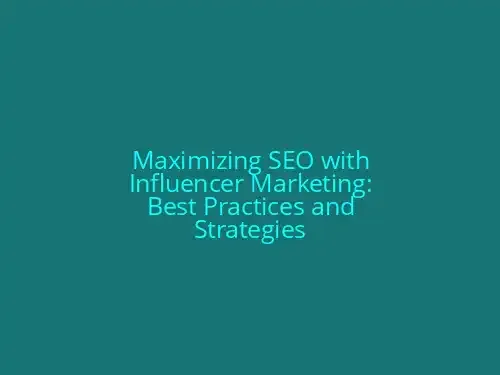
Maximizing SEO with Influencer Marketing: Best Practices and Strategies
**Section 1: General Information**\nFor creating an SEO-optimized article outline for the keyword Influencer Marketing, follow these steps:\n### General Information\n- **Publisher**: [Your Name/Organization]\n- **Content Topic**: Influencer Marketing\n- **Style and Voice**: Formal, third-person voice\n- **Word Count**: 1,000 words\n- **Objective**: Educate readers on the importance and best practices of influencer marketing for SEO.\n- **Target Audience**: Marketing professionals and business owners interested in influencer marketing.\n- **User Persona**: Marketing managers, business owners, and SEO professionals.\n### SEO Details\n- **URL**: [Your URL slug, including the keyword Influencer Marketing]\n- **Meta Data**:\n - **Meta Title**: Maximizing SEO with Influencer Marketing: Best Practices and Strategies\n - **Meta Description**: Learn how influencer marketing can improve your SEO with quality backlinks and brand awareness. Discover the best practices and strategies for successful campaigns.\n- **Keywords**:\n - **Primary Keyword**: Influencer Marketing\n - **Secondary Keywords**: SEO, backlinks, brand awareness, marketing campaigns\n### Competition and Keyword Intent\n- **Competing Pages**: Analyze top-ranking articles for Influencer Marketing to understand the competition.\n- **Keyword Intent**: Informational and transactional (e.g., How to use influencer marketing for SEO and Best influencer marketing platforms for SEO).\n### Content Outline\n- **Introduction**:\n - Brief overview of influencer marketing and its impact on SEO.\n - Importance of incorporating influencer marketing into SEO strategies.\n- **Benefits of Influencer Marketing for SEO**:\n - Quality backlinks\n - Increased brand awareness\n - Targeted audience engagement\n- **Best Practices for Influencer Marketing SEO**:\n - Partnering with creators for high-quality content\n - Repurposing content for maximum reach\n - Monitoring and optimizing influencer marketing campaigns\n- **SEO Optimization for Influencer Marketing Content**:\n - Writing for humans and algorithms\n - Crafting compelling headlines and meta descriptions\n - Including target keywords and variations\n- **Real-World Examples and Case Studies**:\n - Successful influencer marketing campaigns\n - Lessons learned and best practices\n- **Conclusion**:\n - Recap of the importance of influencer marketing for SEO\n - Future of influencer marketing in SEO\n### Additional Tips\n- **Internal and External Links**: Include relevant internal links to your website and external links to credible sources.\n- **Content Formatting**: Use headings, subheadings, and short paragraphs for easy readability.\n- **Reading Level**: Aim for an 8th-grade reading level to ensure the content is accessible to a wide audience.\n- **Revisions and Editing**: Review and revise the content for clarity, grammar, and SEO optimization.### SEO Details\n- **URL**: influencer-marketing-seo-best-practices\n- **Meta Data**:\n - **Meta Title**: Maximizing SEO with Influencer Marketing: Best Practices and Strategies\n - **Meta Description**: Learn how influencer marketing can improve your SEO with quality backlinks and brand awareness. Discover the best practices and strategies for successful campaigns.\n- **Keywords**:\n - **Primary Keyword**: Influencer Marketing\n - **Secondary Keywords**: SEO, backlinks, brand awareness, marketing campaigns\n### Competition and Keyword Intent\n- **Competing Pages**: Analyze top-ranking articles for Influencer Marketing to understand the competition.\n- **Keyword Intent**: Informational and transactional (e.g., How to use influencer marketing for SEO and Best influencer marketing platforms for SEO).\n### Content Outline\n- **Introduction**:\n - Brief overview of influencer marketing and its impact on SEO.\n - Importance of incorporating influencer marketing into SEO strategies.\n- **Benefits of Influencer Marketing for SEO**:\n - Quality backlinks\n - Increased brand awareness\n - Targeted audience engagement\n- **Best Practices for Influencer Marketing SEO**:\n - Partnering with creators for high-quality content\n - Repurposing content for maximum reach\n - Monitoring and optimizing influencer marketing campaigns\n- **SEO Optimization for Influencer Marketing Content**:\n - Writing for humans and algorithms\n - Crafting compelling headlines and meta descriptions\n - Including target keywords and variations\n- **Real-World Examples and Case Studies**:\n - Successful influencer marketing campaigns\n - Lessons learned and best practices\n- **Conclusion**:\n - Recap of the importance of influencer marketing for SEO\n - Future of influencer marketing in SEO\n### Additional Tips\n- **Internal and External Links**: Include relevant internal links to your website and external links to credible sources.\n- **Content Formatting**: Use headings, subheadings, and short paragraphs for easy readability.\n- **Reading Level**: Aim for an 8th-grade reading level to ensure the content is accessible to a wide audience.\n- **Revisions and Editing**: Review and revise the content for clarity, grammar, and SEO optimization.### SEO Details\n- **URL**: [Insert URL slug including the keyword Influencer Marketing]\n- **Meta Data**:\n - **Meta Title**: Maximizing SEO with Influencer Marketing: Best Practices and Strategies\n - **Meta Description**: Learn how influencer marketing can improve your SEO with quality backlinks and brand awareness. Discover the best practices and strategies for successful campaigns\n- **Keywords**:\n - **Primary Keyword**: Influencer Marketing\n - **Secondary Keywords**: SEO, backlinks, brand awareness, marketing campaigns### **SEO Optimization for Influencer Marketing Content**\nTo create SEO-optimized content for influencer marketing, follow these steps:\n1. **Write for Humans and Algorithms**:\n - **Use a Formal, Third-Person Voice**: Ensure your content is professional, informative, and engaging.\n - **Craft Compelling Headlines and Meta Descriptions**: Use relevant keywords while creating attention-grabbing headlines and meta descriptions.\n2. **Incorporate Target Keywords and Variations**:\n - **Primary Keyword**: Influencer Marketing\n - **Secondary Keywords**: SEO, backlinks, brand awareness, marketing campaigns\n - **Use a Keyword Density of 2% to 3%**: This helps maintain a natural flow without appearing spammy.\n3. **Image Optimization**:\n - **Alt Tags and File Names**: Include keywords in descriptive alt tags and file names to help search engines understand the content of images.\n4. **Content Formatting**:\n - **Headings and Subheadings**: Use H2, H2, and H3 tags to structure the content and improve readability.\n - **Short Paragraphs and Bullet Points**: Break up long content into shorter sections with bullet points for better readability.\n5. **Reading Level**:\n - **Aim for an 8th-Grade Reading Level**: Ensure your content is accessible to a wide audience by maintaining a readable level.\n6. **Internal and External Links**:\n - **Include Relevant Internal Links**: Link to other relevant pages on your website to enhance user experience and search engine ranking.\n - **External Links to Credible Sources**: Add high-quality, relevant links to credible sources to provide more information and credibility to your content.\n7. **Revisions and Editing**:\n - **Review and Revise**: Ensure the content is clear, grammatically correct, and optimized for SEO before publishing.\nBy following these steps, you can create influential marketing content that not only educates readers but also improves your websites SEO and user engagement.
read more →